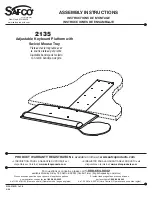
BINDING AND DEVICE GROUPS:
The illustration below shows how a complex network of multiple MōVI Controllers, MōVIs, and Freefly 3-Axis FIZ Receivers* might be configured. Each Device
Group can consist of one of more MōVIs (with attached MōVI Controller Receivers) or Freefly 3-Axis FIZ Receivers. This allows a single MōVI Controller to control
both the MōVI and the Freefly 3-Axis FIZ Receiver on one radio link.
Additionally, the MōVI Controller can bind to up to 16 Device Groups. This allows selection from multiple sets of prebound devices. Only one Device Group is
active at any given time. Devices in another Device Group will not be controlled, even if they are powered on and have been bound. The Device Group function is
similar to “model memory” on an RC transmitter.
Arrows indicate binds, which are potential data links for control and telemetry. It is not possible for an unbound MōVI Controller/Receiver pair to communicate. For
example, in the illustration below, MōVI Controller Serial Number 0001 cannot control MōVI Serial Number 0003, because they have not been bound.
Binding is the act of joining a Device Group of one particular MōVI Controller. For example, setting MōVI Controller Serial Number 0003 to Device Group 02 and
binding MōVI Serial Number 0005 according to the bind process described above causes MōVI Serial Number 0005 to join that Device Group. After that, it can be
controlled by MōVI Controller Serial Number 0003 whenever Device Group 02 is selected.
Содержание MoVI
Страница 1: ...USER GUIDE ...
Страница 30: ......














































